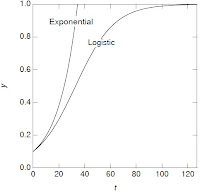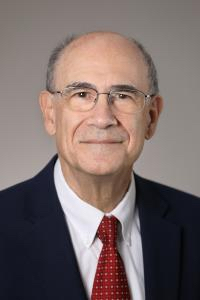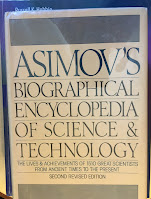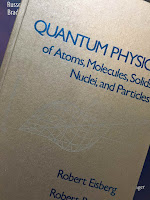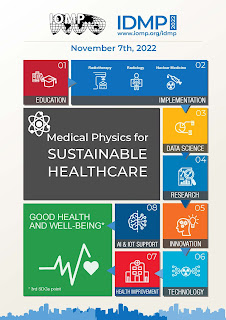 |
| Edith Anne Stoney |
Edith Anne Stoney (1869–1938) was born in Dublin into a scientific family…. Her sister Florence became a radiologist and was awarded the OBE [Order of the British Empire].Stoney began her education in math and physics, then later switched to medicine.
As a young woman, Edith demonstrated considerable mathematical talent, gaining a scholarship at Newnham College, Cambridge, where she achieved a First in the Part I Tripos examination in 1893. Extraordinarily, she was never awarded her Cambridge degree: women were excluded from graduation, a situation that would not change for another 50 years. She was later awarded [bachelor’s and master’s] degrees from Trinity College Dublin, after they accepted women in 1904. Career possibilities for university women were limited. She carried out some difficult calculations on gas turbines and searchlight design for Sir Charles Parsons, and then took a mathematics teaching post at Cheltenham Ladies’ College.Stoney pioneered the role of physics in medical education, a task appreciated by readers of Intermediate Physics for Medicine and Biology.
The 1876 Medical Act had made it illegal for academic institutions to prevent access to medical education on the basis of gender. Anticipating this change in the law, the London School of Medicine for Women was established in 1874 as the first medical school for women in Britain. It soon became part of the University of London, with clinical teaching at the Royal Free Hospital. Edith’s sister Florence studied there, obtaining her [medical degree] in 1898. By this time, changed regulations had embedded physics firmly into medical training, and Edith gained an appointment as a physics lecturer there in 1899.She became interested in medical imaging through her sister, the first female radiologist in the United Kingdom.
In 1901, the Royal Free Hospital appointed Florence into a new part-time position of medical electrician. The two sisters set about selecting, purchasing and installing x-ray equipment and, the following April, a new x-ray service was opened in the electrical department.
 |
| Edith and Florence with their father George Johnstone Stoney. |
During the next few years Edith actively supported the women’s suffrage movement, though opposed the direct violent action with which it was later associated. The years from 1910–1915 did not go smoothly for her. After her father’s death in 1911 she no longer had his guidance to call on. As student numbers increased so did her staff, but they often did not stay long, finding her difficult to work with. Finally, in March 1915, she left [her teaching position at the University of London].World War I began in 1914; Great Britain was fighting alongside France and Russia (and its ally Serbia) against Germany, Austria-Hungary, and Italy.
Edith was now free from other commitments and could make her own contribution to the war. She contacted the Scottish Women’s Hospitals (SWH), an organisation formed in 1914 to give medical support in the field of battle, financed by the women’s suffrage movement. In May she set off to Europe, and would be away for most of the next 4 years… She established stereoscopy to localise bullets and shrapnel and introduced the use of x-rays in the diagnosis of gas gangrene… [The war resulted in] traumatically injured soldiers and difficult working conditions. It could have crushed a weaker character… It was hard physical work for the women to pack up the whole tented hospital, weighing three or four hundred tons.Stoney’s work with x-rays work put her at risk of radiation exposure.
In March 1918, and for the third time, she had to supervise a camp closure and retreat, when Villers-Cotterets was overrun by the advancing front. During the final months of the war the fighting intensified and there was a huge increase in workload. In the month of June 1918 alone the x-ray workload peaked at over 1,300, partly resulting from an increased use of fluoroscopy... However, [fluoroscopy] also resulted in an increased incidence of radiation burns to Edith’s staff, two of whom had to take sick leave to recover.After the war ended, her work supporting the troops was honored by government awards, but not with an appropriate job.
Her war service was recognised by the medals that she was awarded: from France, the Médaille des épidémies and the Croix de Guerre; from Serbia, the Order of St Sava; and the Victory [Medal] and [the] British War Medal from Britain. Returning to England and with no pension and no medical qualification she took a post as lecturer in physics in the Household and Social Science department at King’s College for Women, which she held until 1925.She retired in 1925, but remained active supporting women in science.
After leaving King’s she retired to Bournemouth where she lived with Florence who was by then terminally ill with spinal cancer. She supported the British Federation [of] University Women (BFUW) for which she had acted as the first treasurer before the war. She travelled widely, first with her ailing sister, and then alone after Florence died in 1932.Stoney passed away just as Europe was hurtling toward another world war.
Edith Stoney died, aged 69 years, on 25th June 1938. Obituaries were printed in Nature, The Lancet and The Times…. She was not noted as a creative scientist: this was not her forte. She was a tough and single-minded woman with high academic ability. Her organisational skills established physics laboratories and courses in two institutes of higher education. She showed considerable bravery and resourcefulness in the face of extreme danger, and imagination in contributing to clinical care under the most difficult conditions of war. She was a strong advocate of education for women... At a time when medical physics was still struggling to become an identified profession, Edith Stoney stands out as one of its most able pioneers.
Anyone searching for a female role model in medical physics need look no further. What an amazing life.
Happy birthday, Edith Anne Stoney. We need more like you today.

